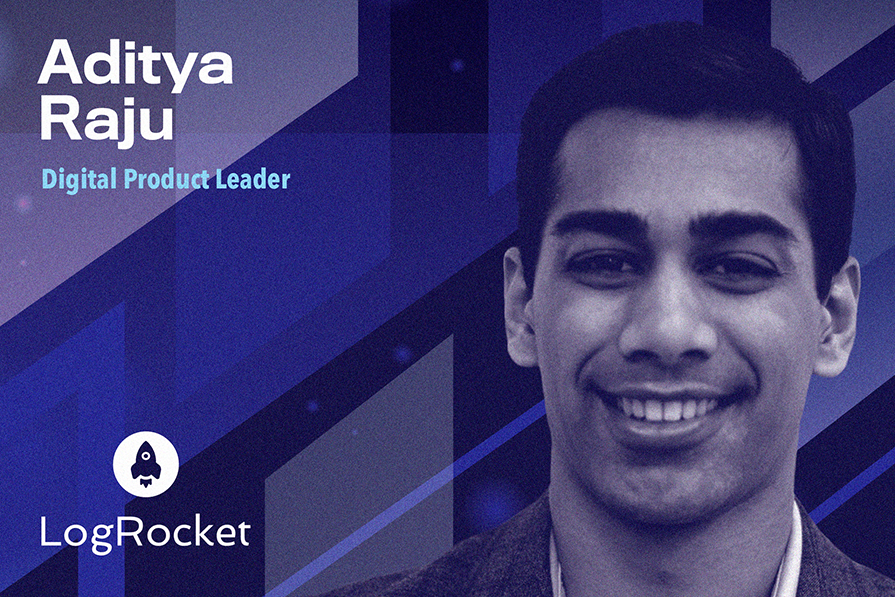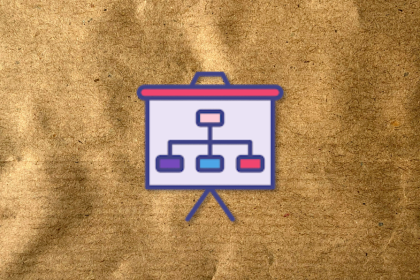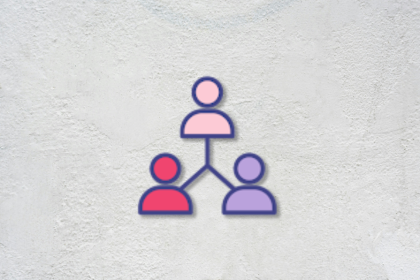Aditya Raju is a transformative digital product leader with extensive expertise in digital strategy, product management, and consumer experience across healthcare and consumer products. He has held director-level roles at Corewell Health, CVS Health, and Blue Cross Blue Shield of Massachusetts, where he has led cross-functional teams to deliver enterprise-wide digital transformations impacting millions of users.

Aditya’s work has improved consumer engagement, streamlined omnichannel experiences, and scaled innovative healthcare solutions for millions of users. With a passion for driving digital innovation and creating meaningful consumer experiences, he brings valuable insights to the intersection of digital transformation and healthcare.
In our conversation, Aditya talks about the importance of meeting users in the healthcare ecosystem where they are, including via platform, language, communication style, and more. He also shares how, in his various roles, user testing has informed overall healthcare product decision-making.
My experience spans large healthcare organizations and health systems, including Corewell Health, CVS Health, and Blue Cross Blue Shield of Massachusetts. My approach has always been to start with deep audience segmentation in these organizations. This moves beyond basic demographics and focuses more on nuanced consumer needs.
Nowadays, we’re seeing a significant amount of shift in consumer expectations, and COVID accelerated a lot of that. Consumers are very accustomed to highly intuitive and self-service experiences, whether it be clicking a button to see a movie on Netflix rather than going to the theater, or getting groceries delivered via an app. Healthcare is starting to evolve to help meet those particular standards and needs.
In my past organizations, which serve millions of people, we segmented users not just by clinical needs, but also by digital savviness and their comfort level for leveraging self-service tools. We wanted to meet users where they need to be met. We looked at preferred channels, whether it be a member portal, patient portal, overall website, or virtual health platform, and how those preferences align with on-demand access.
When we think about prospective members, they want to have that same “retail” experience they’re used to when trying to be able to navigate through a very complex healthcare need. If you’re a user thinking about selecting a healthcare plan, it’s the same thing as shopping. We’re using AI to power a direct-to-consumer platform and create a shopping experience for users so that they can buy the right plan and be as self-informed as possible. That’s the level of self-management that we think about.
When we think about large healthcare organizations like CVS Health or Blue Cross Blue Shield, segmentation is key to differentiating consumers and meeting their unique needs. My approach has always been to go beyond basic demographics and focus on personalization and digital strategy to create ease and efficiency for users. For example, in medical management, segmentation allows us to show users exactly what their plans cover, tailored to their specific needs. By leveraging digital capabilities, we can further enhance accessibility and personalization.
With AI, we can use advanced technology in things like chatbots and search, so we can be more conversational with the consumer. That way, they can get immediate access and gratification toward their digital services from healthcare providers, payers, and systems. We want to give users the right information with the least amount of abrasion or friction possible.
Also, when thinking about different channels as a result of segmentation, we want to give options here as well. Consumers are so used to picking up the phone and calling a service agent, but there are times when a chatbot or mobile app makes more sense for the situation. We want to be able to meet the consumer where they want to be met and enable our capabilities through various channels, like web, mobile, chatbots, etc.
This is a critical balancing act when we think about digital experiences and healthcare, because consumers are starting to expect both broad accessibility as well as tailored interactions. With healthcare, we want to make sure we’re safeguarding sensitive data on top of that. So that’s paramount when we think about privacy and the data that a consumer is trusting us with.
I recommend beginning with a robust, accessible, and intuitive foundational platform that can serve all consumers and users. It should be as easy as possible for users to navigate through the application. We don’t want to involve too many steps, or else people can’t get to the right information that they need.
When we think about personalization, we start to think about PHI information, which is sensitive patient data typically offered on an opt-in basis. We also want to make sure that user consent is explicit, and also that we’re being as transparent as possible with the consumer so that the consumer is able to manage their own needs and privacy settings on their digital platforms. That’s incredibly critical for us to tailor the consumer experience, specifically when we think about scaling it.
Lastly, when we think about healthcare organizations, the experience is fundamental. We want to be able to tailor it, but at the end of the day, the data we have is de-identified and aggregated. We have to leverage broader insights to enhance that experience without compromising the individual’s privacy. There are a lot of steps involved in this process, but it’s important and we must do it.
Our approach is to think of our product as a global experience. We have folks who are bilingual, for example, so we want to offer our platform in multiple languages so that they don’t have to default to English if that’s not their preference. It’s incredibly critical that all of our health information and UX/UI elements have a layer of communication preferences built into them. We want to communicate with the consumer in the right way.
To do this, we leverage strategic technology use as well as human translation. Not only do we have professional human translation, but localization for core content as well. And if we require more dynamic content, we’ve always used AI as a starting point before running through a rigorous review by humans, who are native speakers with subject matter expertise. The same thing applies to cultural relevance. As we start to engage with native speakers, we can leverage employee resource groups to ensure that the imagery, tone, and examples are culturally appropriate and accommodating.
Healthcare is so complex, and ensuring clarity and accuracy in a healthcare system is paramount. There’s always an element of a learning curve. Even for someone like me who’s been doing this for a while, I still don’t get all the acronyms. I like to keep that in mind, especially since a lot of the terminology is familiar to us but daunting to consumers when they see it for the first time.
Our overarching goal within healthcare systems and organizations is to translate — and we don’t just mean the literal translations, but leveraging our processes and expertise to make this complex information as simple as possible to the consumer. We also want to ensure that all our communications have the tone of an ally, not just a robotic machine.
I think that healthcare systems are starting to leverage technology and human expertise to meet consumers where they need to be met. This could mean starting with the content in English and making it simple, clear, and empathetic, or using AI to do advanced translations that are culturally accurate. It’s also not just like we’re translating and then our job is done — we’re continually learning. We do user testing often to ensure that our information is truly understandable and helpful.
As I mentioned earlier, COVID has accelerated digital adoption. As we start to see the population growing more with digital technology, we think about the different ways we can help solve the new problems that come up. We maintain continuous feedback loops and talk to consumers regularly. We try to solicit them not just through quantitative data, like asking if they found the information they needed, but qualitative information as well, such as surveys, usability testing, app store reviews, and more. We also collect a lot of data from user behavior insights, engagement metrics, and satisfaction scores.
In general, a lot goes into personalization. We think about A/B testing and experimentation, and aim to test if what we’re doing meets the hypothesis we started with. We start small with an MVP approach and then build from there. There’s a lot of cross-collaboration that goes into it. It’s not just about the developer coming in and making changes — there’s a ton of communication and alignment that goes on in the backend, especially as it pertains to product, engineering, design, sales, SMEs, marketing, operations, and more.
A/B testing goes beyond just showing a different logo or color. It can encompass personalization efforts, and it’s a data-driven way to see how we can de-risk any decisions. We don’t want to go full-throttle on something without knowing if it’ll work.
We have invested a lot in changes to our experience. For example, at CVS or BCBSMA, a lot goes into the prescription refill process or a new account signup. How many pages are too many when a user tries to create an account? We want to look at measurable improvements within conversion rates, and A/B testing is a great way to do that.
We also use A/B testing on our UI to see if the enrollment funnel enables maximum adoption and engagement. We want to make it smooth and simple, and A/B testing also extends into engagement initiatives like wellness programs or health reminders. These things all measure stickiness of the applications, and our testing helps figure out the direction we want to go in.
It’s going to continue evolving, especially with the advent of agentic chatbots that can look into the different facets that a consumer is feeling. Digital offerings in healthcare are also going to start measuring with more proactive, personalized, and seamless experiences. I also think that consumers are starting to want to be stewards of their healthcare. I see it evolving a lot more toward hyper-personalization, where experiences are truly individualized. Technology will deliver health insights and interventions that are more focused on each person’s needs.
Further, I think predictive and preventive health are going to become more prominent. Studies are showing it’ll save $200–$300 billion in healthcare spending. This involves things like identifying health risks, nudging users toward healthier behaviors, and moving from reactive to proactive and preventive well-being. I’m excited to see this develop and take shape over the years.

LogRocket identifies friction points in the user experience so you can make informed decisions about product and design changes that must happen to hit your goals.
With LogRocket, you can understand the scope of the issues affecting your product and prioritize the changes that need to be made. LogRocket simplifies workflows by allowing Engineering, Product, UX, and Design teams to work from the same data as you, eliminating any confusion about what needs to be done.
Get your teams on the same page — try LogRocket today.

Stop letting unreliable data block features. Treat data as inventory to track quality, ownership, and ship with confidence.

Learn why slide decks slow teams down and explore better tools like whiteboards, PRDs, and prototypes to improve collaboration and alignment.

AI PM roles are evolving fast. Learn the five types of AI PMs, the skills they need, and how they shape AI products across industries.

Learn how you can use AI agents to automate workflows, boost productivity, and choose the right tools while avoiding common pitfalls.